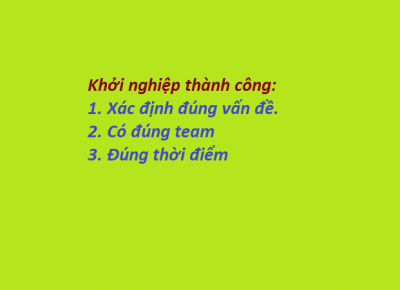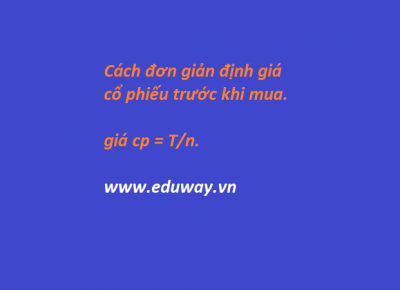Is the Universe Made of Math?
What's the answer to the ultimate question of life, the universe, and everything? In Douglas Adams' science-fiction spoof “The Hitchhiker's Guide to the Galaxy”, the answer was found to be 42; the hardest part turned out to be finding the real question. I find it very appropriate that Douglas Adams joked about 42, because mathematics has played a striking role in our growing understanding of our Universe.
The Higgs Boson was predicted with the same tool as the planet Neptune and the radio wave: with mathematics. Galileo famously stated that our Universe is a “grand book” written in the language of mathematics. So why does our universe seem so mathematical, and what does it mean? In my new book “Our Mathematical Universe”, I argue that it means that our universe isn’t just described by math, but that it is math in the sense that we’re all parts of a giant mathematical object, which in turn is part of a multiverse so huge that it makes the other multiverses debated in recent years seem puny in comparison.
Math, math everywhere!
But where's all this math that we're going on about? Isn't math all about numbers? If you look around right now, you can probably spot a few numbers here and there, for example the page numbers in your latest copy of Scientific American, but these are just symbols invented and printed by people, so they can hardly be said to reflect our Universe being mathematical in any deep way.
Because of our education system, many people equate mathematics with arithmetic. Yet mathematicians study abstract structures far more diverse than numbers, including geometric shapes. Do you see any geometric patterns or shapes around you? Here again, human-made designs like the rectangular shape of this book don't count. But try throwing a pebble and watch the beautiful shape that nature makes for its trajectory! The trajectories of anything you throw have the same shape, called an upside-down parabola. When we observe how things move around in orbits in space, we discover another recurring shape: the ellipse. Moreover, these two shapes are related: the tip of a very elongated ellipse is shaped almost exactly like a parabola, so in fact, all of these trajectories are simply parts of ellipses.
We humans have gradually discovered many additional recurring shapes and patterns in nature, involving not only motion and gravity, but also areas as disparate as electricity, magnetism, light, heat, chemistry, radioactivity, and subatomic particles. These patterns are summarized by what we call our laws of physics. Just as the shape of an ellipse, all these laws can be described using mathematical equations.
Equations aren't the only hints of mathematics that are built into nature: there are also numbers.
As opposed to human creations like the page numbers in this book, I'm now talking about numbers that are basic properties of our physical reality. For example, how many pencils can you arrange so that they're all perpendicular (at 90 degrees) to each other? 3 – by placing them along the 3 edges emanating from a corner of your room, say. Where did that number 3 come sailing in from? We call this number the dimensionality of our space, but why are there 3 dimensions rather than 4 or 2 or 42? And why are there, as far as we can tell, exactly 6 kinds of quarks in our Universe? There are also numbers encoded in nature that require decimals to write out – for example, the proton about 1836.15267 times heavier than the electron. From just 32 such numbers, we physicists can in principle compute every other physical constant ever measured.
There's something very mathematical about our Universe, and that the more carefully we look, the more math we seem to find. So what do we make of all these hints of mathematics in our physical world? Most of my physics colleagues take them to mean that nature is for some reason described by mathematics, at least approximately, and leave it at that. But I'm convinced that there's more to it, and let's see if it makes more sense to you than to that professor who said it would ruin my career.
The mathematical universe hypothesis
I was quite fascinated by all these mathematical clues back in grad school. One Berkeley evening in 1990, while my friend Bill Poirier and I were sitting around speculating about the ultimate nature of reality, I suddenly had an idea for what it all meant: that our reality isn't just described by mathematics – it is mathematics, in a very specific sense. Not just aspects of it, but all of it, including you.
My starting assumption, the external reality hypothesis, states that there exists an external physical reality completely independent of us humans. When we derive the consequences of a theory, we introduce new concepts and words for them, such as “protons”, “atoms”, “molecules”, “cells” and “stars”, because they're convenient. It's important to remember, however, that it's we humans who create these concepts; in principle, everything could be calculated without this baggage.
But if we assume that reality exists independently of humans, then for a description to be complete, it must also be well-defined according to non-human entities – aliens or supercomputers, say – that lack any understanding of human concepts. That brings us to the Mathematical Universe Hypothesis, which states that our external physical reality is a mathematical structure.
For example, suppose a basketball trajectory is that of a beautiful buzzer-beater that wins you the game, and that you later want to describe what it looked like to a friend. Since the ball is made of elementary particles (quarks and electrons), you could in principle describe its motion without making any reference to basketballs:
Particle 1 moves in a parabola.
Particle 2 moves in a parabola.
…
Particle 138,314,159,265,358,979,323,846,264 moves in a parabola.
That would be slightly inconvenient, however, because it would take you longer than the age of our Universe to say it. It would also be redundant, since all the particles are stuck together and move as a single unit. That's why we humans have invented a word “ball” to refer to the entire unit, enabling us to save time by simply describing the motion of the whole unit once and for all.
The ball was designed by humans, but it's quite analogous for composite objects that aren't man-made, such as molecules, rocks and stars: inventing words for them is convenient both for saving time, and for providing concepts in terms of which to understand the world more intuitively. Although useful, such words are all optional baggage.
All of this begs the question: is it actually possible to find such a description of the external reality that involves no baggage? If so, such a description of objects in this external reality and the relations between them would have to be completely abstract, forcing any words or symbols to be mere labels with no preconceived meanings whatsoever. Instead, the only properties of these entities would be those embodied by the relations between them.
To answer this question, we need to take a closer look at mathematics. To a modern logician, a mathematical structure is precisely this: a set of abstract entities with relations between them. This is in stark contrast to the way most of us first perceive mathematics – either as a sadistic form of punishment, or as a bag of tricks for manipulating numbers.
Modern mathematics is the formal study of structures that can be defined in a purely abstract way, without any human baggage. Think of mathematical symbols as mere labels without intrinsic meaning. It doesn't matter whether you write “two plus two equals four”, “2 + 2 = 4” or “dos mas dos igual a cuatro”. The notation used to denote the entities and the relations is irrelevant; the only properties of integers are those embodied by the relations between them. That is, we don't invent mathematical structures – we discover them, and invent only the notation for describing them.
In summary, there are two key points to take away: The External Reality Hypothesis implies that a “theory of everything” (a complete description of our external physical reality) has no baggage, and something that has a complete baggage-free description is precisely a mathematical structure. Taken together, this implies the Mathematical Universe Hypothesis, i.e., that the external physical reality described by the theory of everything is a mathematical structure. So the bottom line is that if you believe in an external reality independent of humans, then you must also believe that our physical reality is a mathematical structure. Everything in our world is purely mathematical – including you.
Life without baggage
Above we described how we humans add baggage to our descriptions. Now let's look at the opposite: how mathematical abstraction can remove baggage and strip things down to their bare essence. Consider the sequence of chess moves that have become known as “The Immortal Game”, where white spectacularly sacrifices both rooks, a bishop, and the queen to checkmate with the three remaining minor pieces. When chess aficionados call the Immortal Game beautiful, they're not referring to the attractiveness of the players, the board or the pieces, but to a more abstract entity, which we might call the abstract game, or the sequence of moves.
Chess involves abstract entities (different chess pieces, different squares on the board, etc.) and relations between them. For example, one relation that a piece may have to a square is that the former is standing on the latter. Another relation that a piece may have to a square is that it's allowed to move there. There are many equivalent ways of describing these entities and relations, for example with a physical board, via verbal descriptions in English or Spanish, or using so-called algebraic chess notation. So what is it that's left when you strip away all this baggage? What is it that's described by all these equivalent descriptions? The Immortal Game itself, 100% pure, with no additives. There’s only one unique mathematical structure that’s described by all these equivalent descriptions.
The Mathematical Universe Hypothesis implies that we live in a relational reality, in the sense that the properties of the world around us stem not from properties of its ultimate building blocks, but from the relations between these building blocks. The external physical reality is therefore more than the sum of its parts, in the sense that it can have many interesting properties while its parts have no intrinsic properties at all. This crazy-sounding belief of mine that our physical world not only is described by mathematics, but that it is mathematics, makes us self-aware parts of a giant mathematical object. As I describe in the book, this ultimately demotes familiar notions such as randomness, complexity and even change to the status of illusions; it also implies a new and ultimate collection of parallel universes so vast and exotic that all the above-mentioned bizarreness pales in comparison, forcing us to relinquish many of our most deeply ingrained notions of reality.
It’s easy feel small and powerless when faced with this vast reality. Indeed, we humans have had this experience before, over and over again discovering that what we thought was everything was merely a small part of a larger structure: our planet, our solar system, our Galaxy, our universe and perhaps a hierarchy of parallel universes, nested like Russian dolls. However, I find this empowering as well, because we've repeatedly underestimated not only the size of our cosmos, but also the power of our human mind to understand it. Our cave-dwelling ancestors had just as big brains as we have, and since they didn't spend their evenings watching TV, I'm sure they asked questions like “What's all that stuff up there in the sky?” and “Where does it all come from?”. They'd been told beautiful myths and stories, but little did they realize that they had it in them to actually figure out the answers to these questions for themselves. And that the secret lay not in learning to fly into space to examine the celestial objects, but in letting their human minds fly. When our human imagination first got off the ground and started deciphering the mysteries of space, it was done with mental power rather than rocket power.
I find this quest for knowledge so inspiring that I decided to join it and become a physicist, and I’ve written this book because I want to share these empowering journeys of discovery, especially in this day and age when it’s so easy to feel powerless. If you decide to read it, then it will be not only the quest of me and my fellow physicists, but our quest.
https://www.scientificamerican.com/article/is-the-universe-made-of-math-excerpt/









